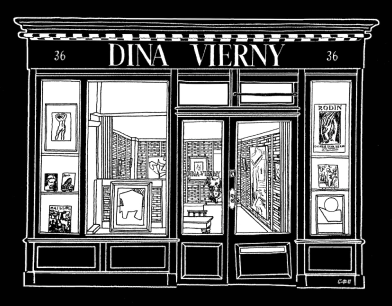All Exhibitions here
Russian-born artist Ilya Kabakov recently passed away on May 27th of 2023 at age 89. Supported since the 70s by Dina Vierny, let’s go back to the career of one whom the merchant saw as "one of the most original painters of his generation".May 30th 2023
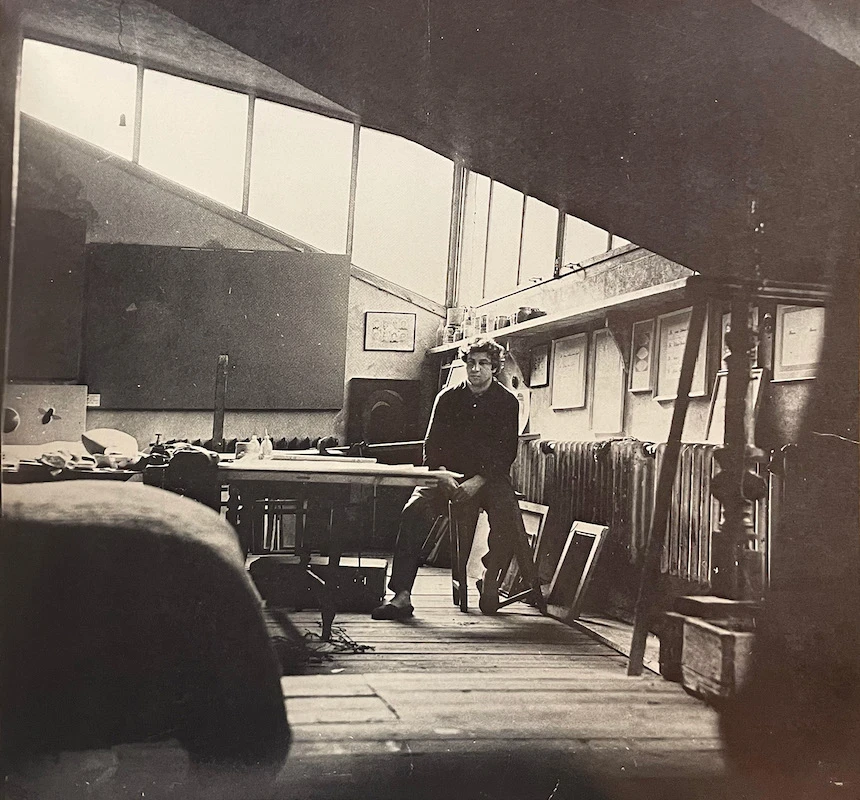 Picture of Ilya Kabakov in his workshop
Picture of Ilya Kabakov in his workshop Ilya Kabakov was born in 1933 in Dniepropetrovsk in the Soviet Union. He studied graphic arts at the Sourikov Institute in Moscow in 1951 and graduated 6 years later. The political climate prevents the artist from presenting his works to the public, because it is a privilege that only members of the Union of Soviet Artists enjoy. He nevertheless became a "candidate member" of the Union of Soviet Artists in 1959, which enabled him to obtain a workshop, a decent salary and work as an illustrator of children’s books. The year 1965 marked a turning point: he exhibited for the first time abroad, in Italy, where he presented his "Series of Showers", interpreted as a critique of Soviet culture. As a result, Kabakov no longer has the right to practice and subsequently works under pseudonym. Kabakov’s work wish to render to the world his experience of life in the Soviet Union. He tries, in very different ways – albums, paintings, installations – to tell a story: that of a society that would have lost all notion of reality. After working on large-format series of paintings, the artist gradually incorporates texts, which enrich the meaning of the work before replacing it. By their conceptual character, the comments denounce a Russian society devoid of any logic, and dialogue directly with the viewer who is confused and concerned.
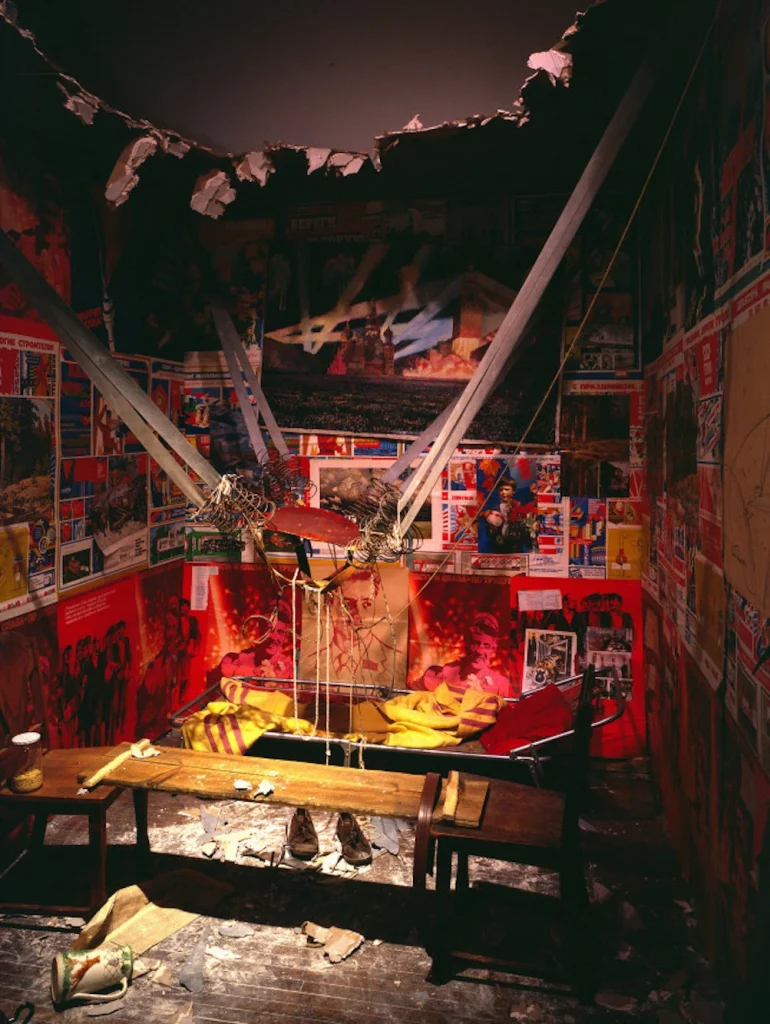

Ilya Kabakov, "The Man Who Flew Into Space From His Apartment", 1985, six panels of posters with collage, Centre Pompidou Paris © Ilya & Emilia Kabakov
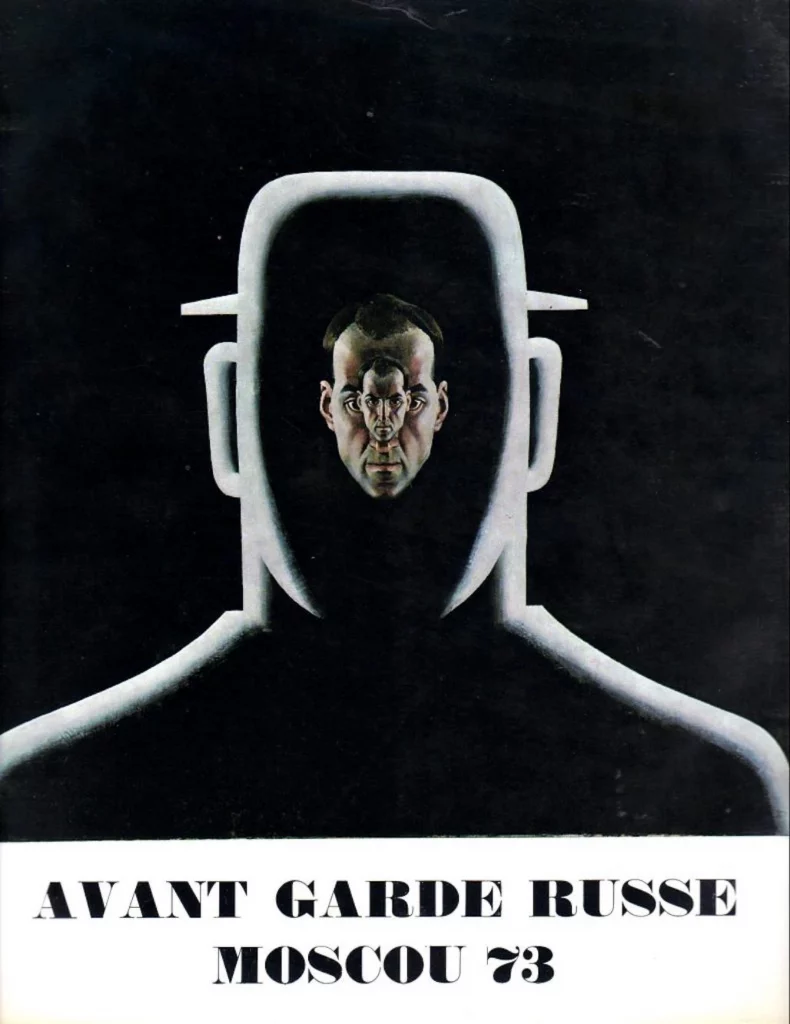
Poster of the exhibition, "Avant-garde Russe, Moscou 73", 1973
Although Ilya Kabakov exhibited very little in Moscow, some of his drawings managed to cross borders and allowed him to acquire a certain international reputation as early as the 1970s. Dina Vierny discovered and began to promote the work of the Russian artist at the very beginning of the year 1970. They meet during the gallery owner’s trip to Russia, crucial trip where she decides to help and support artists who do not bend to the plastic discipline imposed by socialist realism. She later wrote: "I met Ilya Kabakov in Moscow on the evening of January 16th of 1970. From our first meeting, I understood that this artist, unknown in Moscow and forbidden to be exposed, was one of the most original painters of his generation. I took a keen interest in his work. After 27 years I’m still interested in it". From the moment they met, she encouraged the artist to leave the Soviet Union to gain the recognition he deserved. To participate in this, she buys a large quantity of his works and undertakes to make him known in Paris. Dina Vierny returns from her trip with works by Ilya Kabakov, Erik Bulatov and Vladimir Yankilevsky in her luggage. She exhibits all three in her gallery in Saint-Germain-des-Prés in the event exhibition "Russian Avant-garde - Moscow 1973".
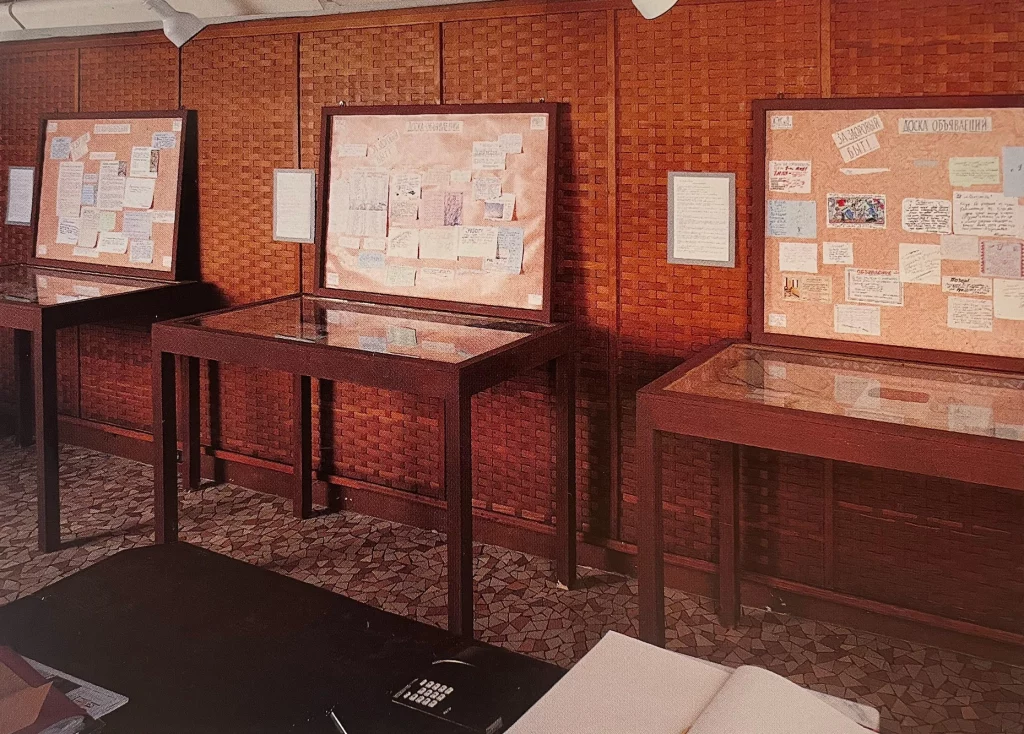
Exhibition view, "The communal kitchen", 1991, Dina Vierny Gallery
In 1985, Dina dedicated his first solo exhibition to Ilya Kabakov and in 1987, he left Russia for France. Dina Vierny was also a great patron of the artist, because in addition to selling his works she bought them so that the proceeds of the sales would allow Kabakov to finance his domestic expenses. She also set up a workshop in her country house, where in 1991 he created the "Red Wagon" which summarizes the history of 20th century Russia, as well as the installation "Dans la cuisine communautaire", carried out in situ and still kept at the Dina Vierny Foundation – Maillol Museum. This installation will also be presented at the gallery in 1993 and then at a FIAC. Dina Vierny also took the installation to another continent by organizing an exhibition at the Seibu Museum in Japan. Kabakov flew to New York in 1992, where his merchant Ronald Feldman presented the installation "L'homme qui s'est envolé dans l'espace" – acquired a few years later by the Centre Pompidou. In 1993, he developed with his wife Emilia, in the United States, increasingly complex installations, celebrated around the world. Even across the Atlantic, Dina Vierny was keen to attend all the artist’s exhibitions. At the Monumenta in 2014, at the Grand Palais, he and his wife built the utopian city "L'Étrange cité", a global reflection on how we think about art, culture, daily life, our present and our future.
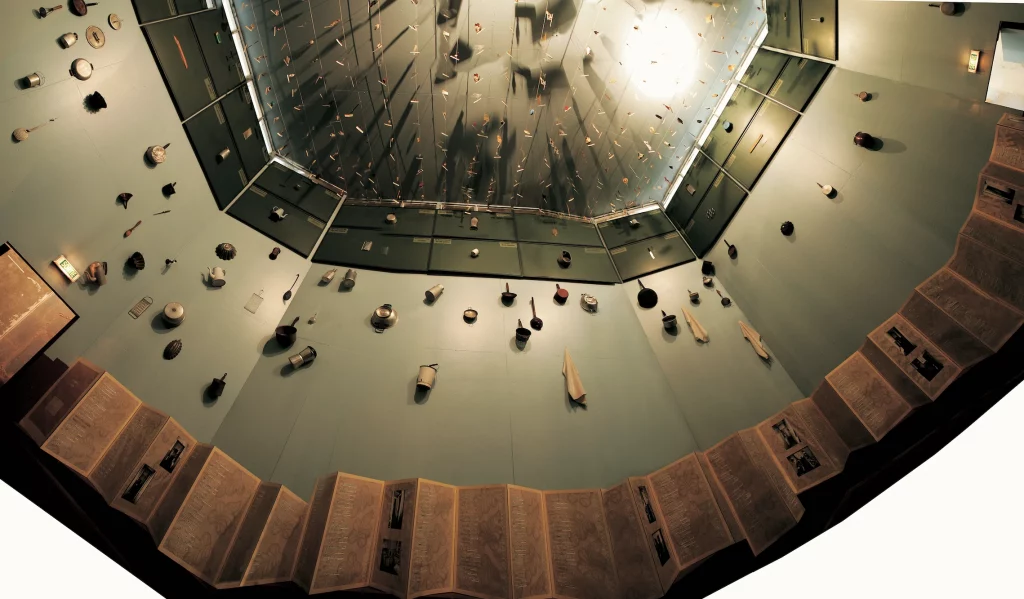
Installation, "The communal kitchen", 1991, Maillol Museum
During his lifetime, he enjoyed great success and exhibited in the world’s largest museums and events: Museum of Modern Art in New York (1991), Centre Pompidou (1996), Venice Biennale (1993), Whitney Biennale (1997), Garage Museum in Moscow (2008). The Dina Vierny Gallery is proud to have contributed to his recognition as an artist.

"L'Étrange cité", 2014, Grand Palais
Although Ilya Kabakov exhibited very little in Moscow, some of his drawings managed to cross borders and allowed him to acquire a certain international reputation as early as the 1970s. Dina Vierny discovered and began to promote the work of the Russian artist at the very beginning of the year 1970. They meet during the gallery owner’s trip to Russia, crucial trip where she decides to help and support artists who do not bend to the plastic discipline imposed by socialist realism. She later wrote: "I met Ilya Kabakov in Moscow on the evening of January 16th of 1970. From our first meeting, I understood that this artist, unknown in Moscow and forbidden to be exposed, was one of the most original painters of his generation. I took a keen interest in his work. After 27 years I’m still interested in it". From the moment they met, she encouraged the artist to leave the Soviet Union to gain the recognition he deserved. To participate in this, she buys a large quantity of his works and undertakes to make him known in Paris. Dina Vierny returns from her trip with works by Ilya Kabakov, Erik Bulatov and Vladimir Yankilevsky in her luggage. She exhibits all three in her gallery in Saint-Germain-des-Prés in the event exhibition "Russian Avant-garde - Moscow 1973".
 Picture of Ilya Kabakov in his workshop
Picture of Ilya Kabakov in his workshop Russian-born artist Ilya Kabakov recently passed away on May 27th of 2023 at age 89. Supported since the 70s by Dina Vierny, let’s go back to the career of one whom the merchant saw as "one of the most original painters of his generation".
Ilya Kabakov was born in 1933 in Dniepropetrovsk in the Soviet Union. He studied graphic arts at the Sourikov Institute in Moscow in 1951 and graduated 6 years later. The political climate prevents the artist from presenting his works to the public, because it is a privilege that only members of the Union of Soviet Artists enjoy. He nevertheless became a "candidate member" of the Union of Soviet Artists in 1959, which enabled him to obtain a workshop, a decent salary and work as an illustrator of children’s books. The year 1965 marked a turning point: he exhibited for the first time abroad, in Italy, where he presented his "Series of Showers", interpreted as a critique of Soviet culture. As a result, Kabakov no longer has the right to practice and subsequently works under pseudonym. Kabakov’s work wish to render to the world his experience of life in the Soviet Union. He tries, in very different ways – albums, paintings, installations – to tell a story: that of a society that would have lost all notion of reality. After working on large-format series of paintings, the artist gradually incorporates texts, which enrich the meaning of the work before replacing it. By their conceptual character, the comments denounce a Russian society devoid of any logic, and dialogue directly with the viewer who is confused and concerned.
Although Ilya Kabakov exhibited very little in Moscow, some of his drawings managed to cross borders and allowed him to acquire a certain international reputation as early as the 1970s. Dina Vierny discovered and began to promote the work of the Russian artist at the very beginning of the year 1970. They meet during the gallery owner’s trip to Russia, crucial trip where she decides to help and support artists who do not bend to the plastic discipline imposed by socialist realism. She later wrote: "I met Ilya Kabakov in Moscow on the evening of January 16th of 1970. From our first meeting, I understood that this artist, unknown in Moscow and forbidden to be exposed, was one of the most original painters of his generation. I took a keen interest in his work. After 27 years I’m still interested in it". From the moment they met, she encouraged the artist to leave the Soviet Union to gain the recognition he deserved. To participate in this, she buys a large quantity of his works and undertakes to make him known in Paris. Dina Vierny returns from her trip with works by Ilya Kabakov, Erik Bulatov and Vladimir Yankilevsky in her luggage. She exhibits all three in her gallery in Saint-Germain-des-Prés in the event exhibition "Russian Avant-garde - Moscow 1973".

Exhibition view, "The communal kitchen", 1991, Dina Vierny Gallery
In 1985, Dina dedicated his first solo exhibition to Ilya Kabakov and in 1987, he left Russia for France. Dina Vierny was also a great patron of the artist, because in addition to selling his works she bought them so that the proceeds of the sales would allow Kabakov to finance his domestic expenses. She also set up a workshop in her country house, where in 1991 he created the "Red Wagon" which summarizes the history of 20th century Russia, as well as the installation "Dans la cuisine communautaire", carried out in situ and still kept at the Dina Vierny Foundation – Maillol Museum. This installation will also be presented at the gallery in 1993 and then at a FIAC. Dina Vierny also took the installation to another continent by organizing an exhibition at the Seibu Museum in Japan. Kabakov flew to New York in 1992, where his merchant Ronald Feldman presented the installation "L'homme qui s'est envolé dans l'espace" – acquired a few years later by the Centre Pompidou. In 1993, he developed with his wife Emilia, in the United States, increasingly complex installations, celebrated around the world. Even across the Atlantic, Dina Vierny was keen to attend all the artist’s exhibitions. At the Monumenta in 2014, at the Grand Palais, he and his wife built the utopian city "L'Étrange cité", a global reflection on how we think about art, culture, daily life, our present and our future.

Installation, "The communal kitchen", 1991, Maillol Museum
During his lifetime, he enjoyed great success and exhibited in the world’s largest museums and events: Museum of Modern Art in New York (1991), Centre Pompidou (1996), Venice Biennale (1993), Whitney Biennale (1997), Garage Museum in Moscow (2008). The Dina Vierny Gallery is proud to have contributed to his recognition as an artist.

"L'Étrange cité", 2014, Grand Palais
